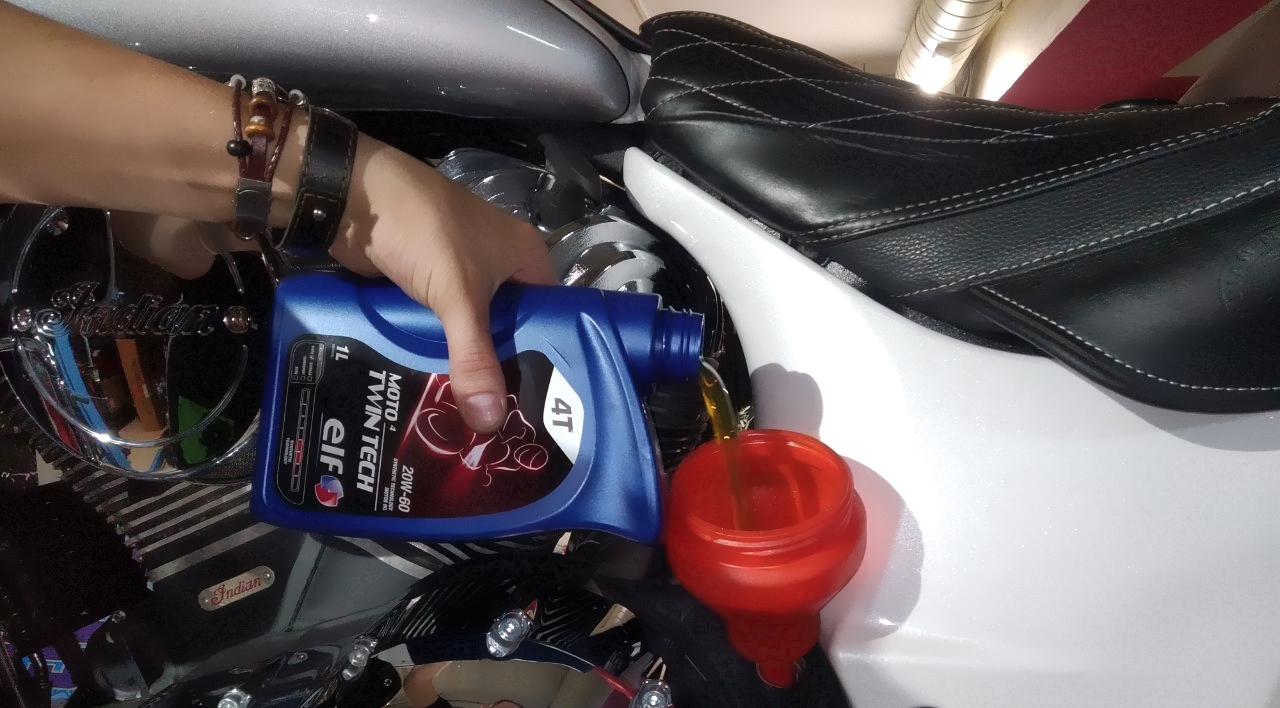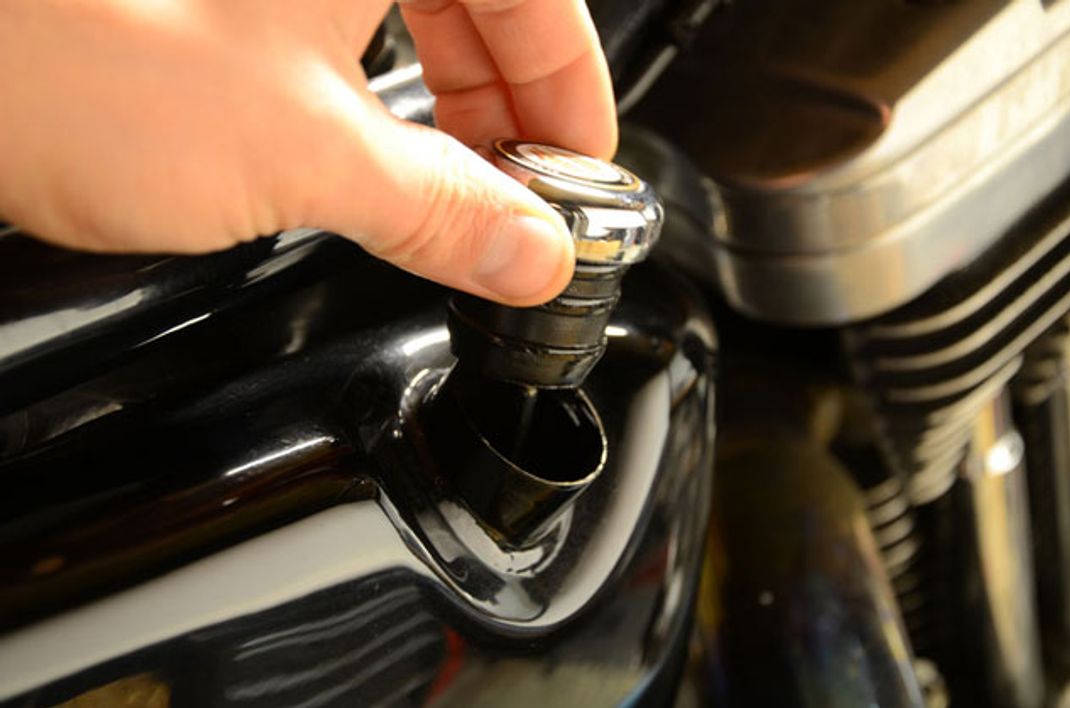How Often to Change Motorcycle Oil
Maintaining your motorcycle is essential to keep it in good condition and ensure its longevity. The oil in your motorcycle lubricates the engine and its various parts, preventing wear and tear and ensuring optimal performance.
However, the question arises: how often should you change your motorcycle oil? The answer to this question depends on various factors, such as the type of oil, the type of engine, and the manufacturer’s recommendations. In general, it is recommended to change your motorcycle oil every 3,000 to 5,000 miles or every six months, whichever comes first.
Why is it Important to Change Motorcycle Oil?
Changing motorcycle oil is important for several reasons. First and foremost, is the health and longevity of your engine. Regular oil changes ensure that your motorcycle’s engine stays in good condition and performs at its best.
Let’s have a look at some of the more common reasons explaining why you should change your motorcycle oil:
Lubrication: The engine oil provides lubrication to the moving parts of the engine thereby reducing friction and wear. Over time, if you do not change the oil at the recommended level, it will break down and becomes less effective.
Contamination: As the engine runs, small amounts of metal particles and dirt get suspended in the oil. As the concentration of these contaminants increases, the chances of damage to the engine also increase.
Cooling: The engine oil carries the heat away from the moving parts. As the oil breaks down, it becomes less effective at cooling the engine, which might cause the engine to overheat.
Corrosion: Engine oil contains additives that protect the engine from corrosion. Over time, these additives can break down, leaving the engine vulnerable to corrosion and rust.
Fuel economy: Fresh engine oil can help improve fuel economy by reducing friction and improving engine performance.
Why is Regular Oil Change Important for Motorcycle Maintenance?
Regular oil change is important to ensure the proper and efficient functioning of your motorcycle. Apart from efficient engine lubrication and fuel economy, there are several other benefits of changing motorcycle oil at the recommended time.
- The oil lubricates moving parts of the engine, such as pistons, valves, and bearings. Overly used oil loses its properties and causes friction and wear on moving components. For a smoothly running engine, and a longer lifespan of your motorcycle it is recommended to change the oil at the manufacturer’s recommended time.
- Routine checkups and regular oil checks will increase the longevity of your motorcycle.
- For the riders who frequently ride short rides, you might need more frequent oil changes (approximately every 2000 to 3000 miles) than the riders on longer routes. Shorter rides usually mean that the engine will not reach its optimal temperature which will cause oil to break quickly.
How Often Should You Change Your Motorcycle Oil?
Keeping in mind the type of oil, here is an estimation of how often you should change your motorcycle oil:
- Mineral Oil: change every 2,000 – 3,000 miles
- Semi-Synthetic Oil: change every 5,000 – 6,000 miles
- Synthetic Oil: change every 7,000 – 10,000 miles
The Frequency of Changing Oil in Different Motorcycle Brands
The frequency of oil changes can vary depending on the brand and model of the motorcycle. Here are some general guidelines for how often to change the oil in different motorcycle brands:
Harley-Davidson: Harley-Davidson recommends changing the oil every 5,000 miles for their motorcycles, or every 3,000 miles for severe service conditions such as frequent short trips, cold weather operations, or extended idling.
Honda: Honda recommends changing the oil every 8,000 miles for their motorcycles, or every 12 months, whichever comes first.
Yamaha: The manufacturer’s manual recommends changing the oil every 3,000 miles, or every 6 months, whichever comes first.
Kawasaki: Kawasaki recommends changing the oil every 3,000 to 4,000 miles for their motorcycles, or every 12 months, whichever comes first.
BMW: BMW recommends changing the oil every 6,000 miles for their motorcycles, or every 12 months, whichever comes first.
Harley Oil Change Interval Synthetic
The recommended oil change for a Harley-Davidson is after 2,500 miles, following the initial inspection of 1,000 miles. The bike can be run up to 5,000 to 6,000 miles using Semi-synthetic oil. However, fully synthetic oil may be used for 7,000 to 10,000 miles.
What Oil Does My Motorcycle Take?
There are several different types of oil that can be used in motorcycle engines. Let’s have a look at each type.
Mineral Oil: The most basic type of oil, extracted and refined from crude oil. Generally, the least expensive one, with the shortest lifespan.
Synthetic Oil: Created from chemically synthesized base oils, and designed for high-performance engines. It might be more expensive than mineral oil but also provides better performance and protection.
Semi-Synthetic Oil: It is a blend of mineral oil and synthetic oil, designed to provide some of the benefits of both types of oil. In terms of performance and cost, it lies between the synthetic oil and the mineral oil.
Racing Oil: It is specifically designed for high-performance racing engines.
High-Mileage Oil: Designed for engines with more than 75,000 miles, and is formulated with additives to help reduce oil consumption, improve engine performance, and extend the life of the engine.
Generally, bikes with 80cc to 125cc engines need mineral oils, while bikes with 150cc to 180cc need semi-synthetic oil. And bikes with above 200cc engines need fully-synthetic oil.
How to Change the Oil on a Motorcycle?
Compared to cars, motorcycles have simpler engines and are easier to work with. Here is a simple step-by-step guide that will show you how you can change the oil of your motorcycle yourself.
Tool Needed:
- A stand to keep your bike upright and steady while you work
- A drain pan
- Gloves and rags
- Funnel
- Strap wrench
- Torque wrench
Step 1: Warm up the engine, some service manuals recommend operating temperature, which means you should ride it for a good 30 minutes before changing the oil.
Step 2: Set your bike up on a stand so it stays steady while you work. Then, take a rag and wipe down the engine area around the oil filter and drain plug.
Step 3: Drain the oil by placing the drain pan under the drain plug, and crack open the plug. Hold your arm so you don’t spill oil all over yourself, and unscrew the plug by hand. Wait until all the oil has drained into the drain pan.
Step 4: Once the oil stops, change the filter using the strap wrench. Pour the oil in the filter into the drain pan.
Step 5: Apply a little oil from the drain pan to the O-ring on your new filter. The oil helps the filter slip smoothly into place and ensures a good seal. Add a little oil directly into the filter so your engine doesn’t run dry when you start it. Install the filter by hand, and turn it until you feel some resistance. Then, turn the filter about a half turn more. Be careful here — if you over-tighten your oil filter, you could damage the seal.
Step 6: Replace the sealing washer and install the drain plug back.
Step 7: Depending on the engine type of your motorcycle, and as per the manufacturer’s manual pour oil into your motorcycle. Start the engine and let it idle for a couple of minutes (10 to 15 minutes).
How Much is a Motorcycle Oil Change?
The average cost of a motorcycle oil change is about $70-$220. You can expect to pay about $18-$40 for regular oil, $20-$70 for semi-synthetics, and $45-$120 for full synthetic oil. The additional cost of oil filters is $12–$90, along with an estimated labor cost of $40-$350+ depending on your bike and the state you live in.
For oil changes at the annual service for the vehicle, you can expect costs of around $90 and $500. On the other hand, if you replace oil with the cheapest version of the oil for your bike, costs can be as low as $70 including labor.
Car oil Vs Motorcycle Oil
There is a lot of difference between motorcycle and car oil. Motorcycle manufacturers typically require higher viscosity oils than passenger cars. Motorcycles often call for grades such as 5W-40, 10W-40, 10W-50, and 20W-50. Car engine oil is packed full of anti-friction additives, which will cause a motorcycle clutch to slip.
How often to change your motorcycle oil depends upon the type of oil that you use, and the model and use of your bike. For your bike’s long and healthy life, it is recommended to religiously follow the manufacturer’s manual for changing oil.
Winterizing a Motorcycle
Winterizing your motorcycle is an essential step to protect it from the harsh winter weather and keep it in top condition. To prepare your motorcycle for winter, start by changing the oil and adding fuel stabilizer to prevent the fuel from going stale.
When winterizing your motorcycle, it’s important to remove the battery and store it in a warm and dry place to prevent it from freezing or losing its charge. You can also use a battery tender to keep it charged and in good condition. Additionally, consider adding antifreeze to the cooling system to prevent the engine from freezing.
Other important steps to winterize your motorcycle include cleaning and lubricating the chain, checking the tire pressure and adding air if needed, and storing the motorcycle in a dry and secure location, away from the elements. Consider investing in a motorcycle cover, to provide additional protection for your motorcycle during the winter months. By taking these steps, you can ensure that your motorcycle is protected from the winter weather and ready to ride again in the spring.
With a little bit of preparation, you can keep your motorcycle in top condition and ensure that it’s ready to ride when the weather gets warmer.












